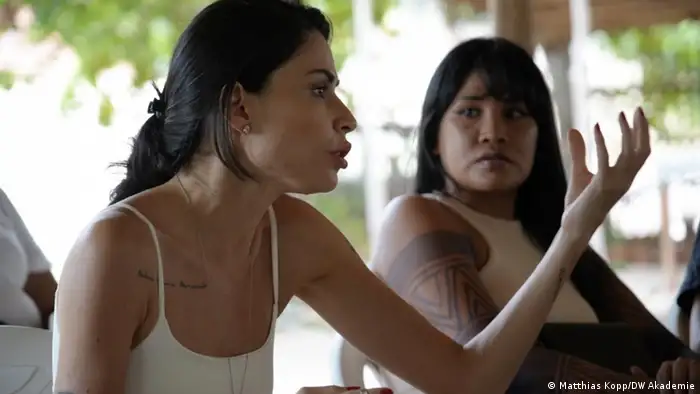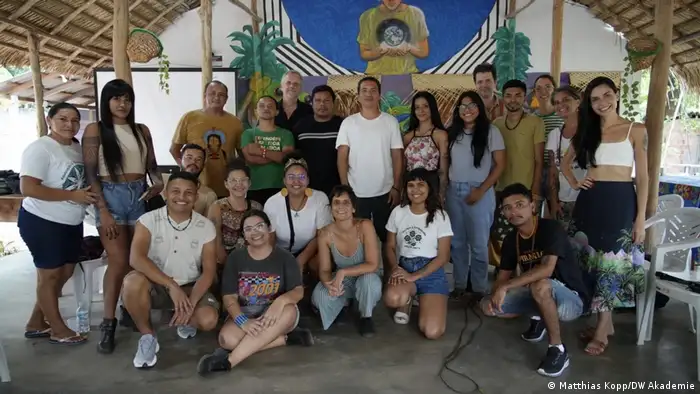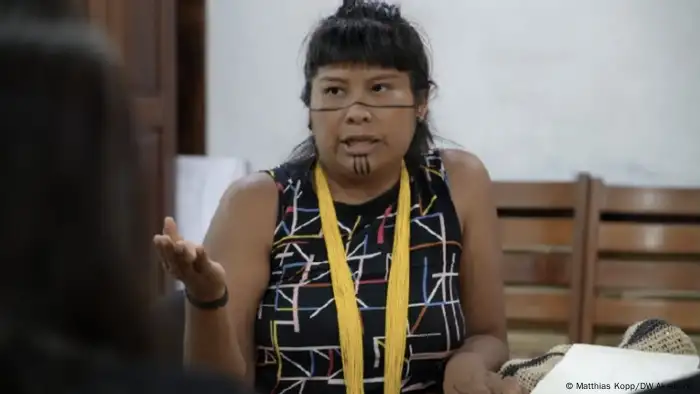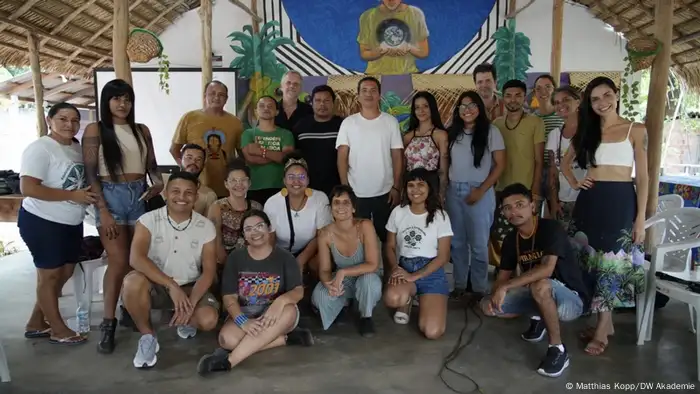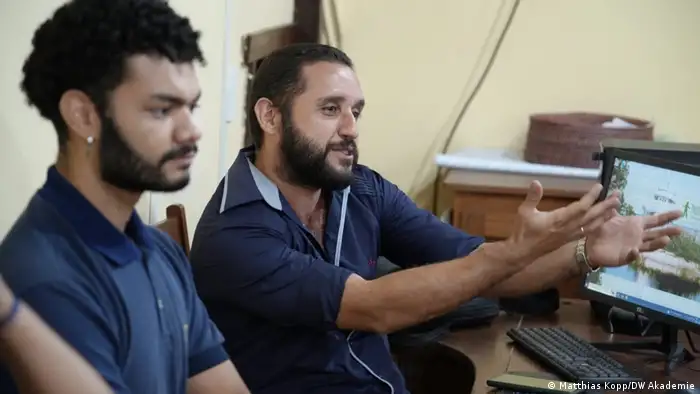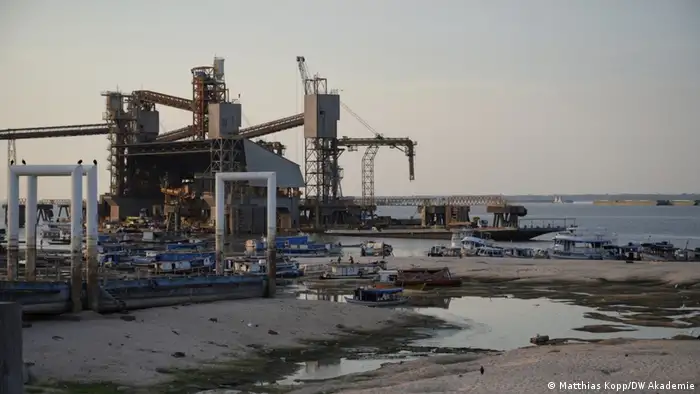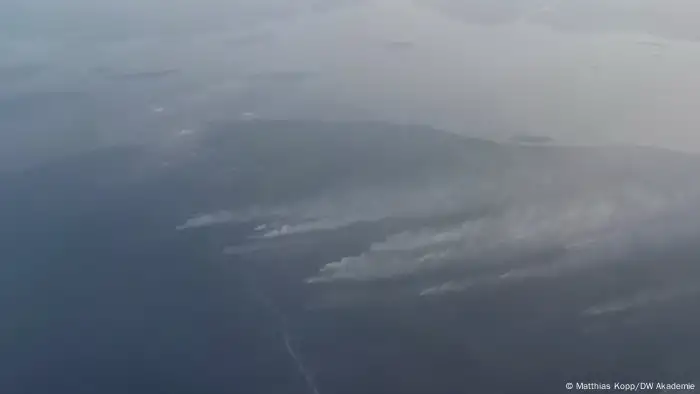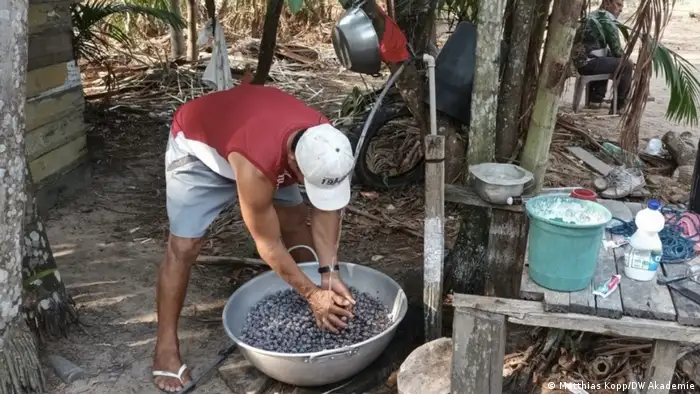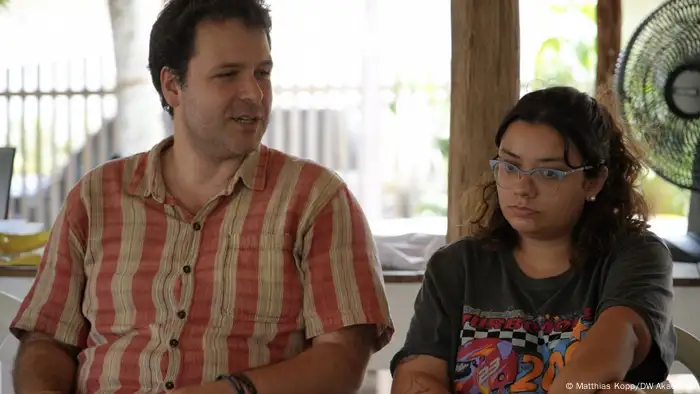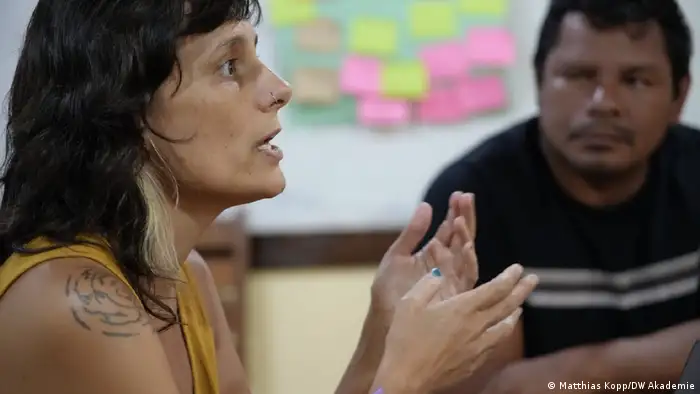Climate change and the media
From the Amazon to Dubai: Community and indigenous media head to the COP climate summit
DW Akademie and the Brazilian NGO Saúde e Alegria send communicators from the Brazilian Amazon, one of the regions most affected by climate change, to cover the negotiations at the COP28 in Dubai.
Aboard a small boat that braves the waters of the mighty Tapajós River, a tributary of the Amazon River in Brazil, ten journalists from different parts of the Brazilian Amazon head toward the city of Santarém. They are the participants that were selected for the final event of the "Get Ready for the COP!" project: travelling to Dubai to cover COP28, the United Nations conference on climate change.
The DW Akademie and Projeto Saúde e Alegria project aims to provide local journalists and communicators with tools to practice climate journalism.
Prior to this first face-to-face meeting, around 30 reporters from the Brazilian Amazon took part in a virtual course that covered the impacts of climate change in the region, international climate agreements and the basics of climate journalism. Their journalism can then go on to provide citizens with tools for climate action.
In Santarém, a select group of ten people from the participant pool are learning about the local reality of the effects of climate change on the Brazilian Amazon. Fortified with the knowledge they will glean from conversations with local scientists and journalists and members of traditional communities, as well as environmental activists, such as Tica Minami, head of the Amazon campaign at Greenpeace Brazil, they will embark on their journey to Dubai.
The Amazon, epicenter of climate change effects
The group's meeting place is Saúde e Alegria's headquarters in Santarém, a city of 400,000 inhabitants located at the mouth of the Tapajós River in the Amazon River. Normally, this place is a veritable sea of rivers: the Tapajós alone reaches a width of about ten kilometers. But the extreme drought in the area is making it difficult for the journalists' boat to cross the river to an agroforestry experimentation center on the other bank.
Dodging jutting rocks and sandbanks, the ferryman tells the participants that he has never seen the river so low in his 15 years of work. When the boat runs aground, there is still more than a hundred meters to go to reach the shore. The group of journalists must wade to the beach with their luggage, running the risk of being stung by poisonous stingrays hiding in the sand.
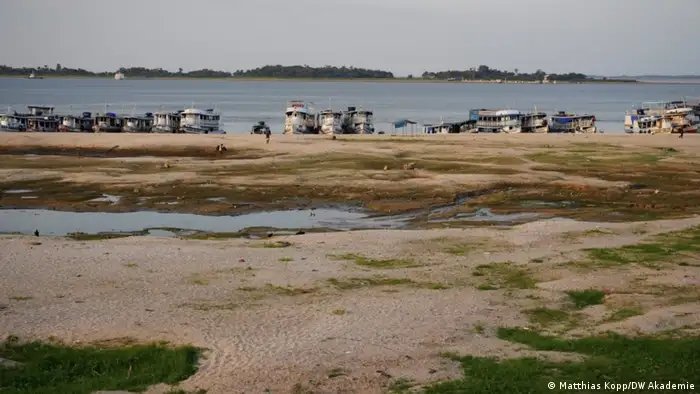
The main culprits of the climate crisis are industrialized countries, but regions such as the Amazon suffer the most from its impacts
Unfortunately the low water is not an exception, but rather an example of how climate change affects life in the Amazon region. In Manaus, the capital of the state of Amazonas, the lowest water level in history has been recorded this year. Drought alternates with periods of torrential rains and severe flooding: climatic extremes that are now part of everyday life for riverine communities. "Get Ready for the COP!" focuses on journalists from these communities.
COP28: From global to local
One of the participants selected to travel to COP28 is Ray Baniwa, an indigenous communicator from the Baniwa people living on Brazil's border with Venezuela and Colombia. Currently, he is researching the impacts of climate change on the indigenous communities of the Rio Negro, some 1,600 kilometers upstream from Santarém.
"My goal is to learn how to combine the data handled by indigenous researchers in the area with geo-satellite information," Baniwa explained.
Five Brazilian media editors support the group with their areas of expertise, from data journalism to audiovisual production, to podcasting. Of particular interest to Baniwa, for example, is the experience of Gustavo Faleiros, a pioneer of environmental journalism in the region and founder of the independent media organization InfoAmazonia. Faleiros has extensive experience in the use of satellite images to document environmental issues and in covering international negotiations.
After the preparatory meeting, the journey to COP28 in Dubai begins. From there, the team will take on the challenge of translating the complexity of such a conference into a language understandable to their communities, using the lessons learned at "Get Ready for the COP!"
For the journalists and their communities, this is just the beginning: Brazil will host the UN climate summit in 2025. Ten years after the Paris Agreement, Belém, a metropolis at the mouth of the Amazon River, will become the capital of climate negotiations. This will be an unmissable opportunity to expand the diversity of voices heard from the Amazon.
The "Get ready for the COP!" project is funded by the German Federal Foreign Office.
DW recommends
WWW links
- Date 30.11.2023
- Feedback: Send us your feedback.
- Print Print this page
- Permalink https://p.dw.com/p/4ZbpC
- Date 30.11.2023
- Send us your feedback.
- Print Print this page
- Permalink https://p.dw.com/p/4ZbpC

